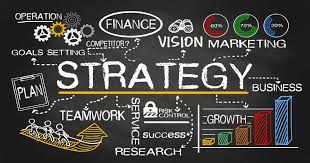The five key performance indicators (KPIs) that most business owners and entrepreneurs understand about business are: Sales (Revenue), Direct Cost, Gross Profit, Operating Cost (overhead), and Net Profit (or Loss).
However, what nearly 90% of those business owners and entrepreneurs don’t fully understand is what and how to use “Break-even”. It is a topic that usually gets me a blank stare from a client every time I take on a new consulting project.
Break-even by Definition
Break-even is the Holy Grail of Business. Break-even is when revenues cover fixed expenses for the year and variable expenses up to a specific point, thus any incremental revenue is subject only to variable expenses.
Breakeven Analysis
The following chart illustrates basic break-even analysis:

Seems pretty overwhelming doesn’t it? But, why is break-even so important?
Well, Break-Even determines profit and loss. Break-even determines if your project gets funded by investors. Breakeven can put you (or) your competitors out of business.
Breakeven Strategy
A good break-even strategy can boost your profits. Break-even strategy can change everything for a business. And yes, A great break-even strategy can be used to put a competitor out of business. Most, if not all, of the Fortune 500 companies use some form of break-even strategy every day.
Break-even pricing strategies can be used in a variety of ways. Let’s say you’re selling a retail paper towel product for instance. Your break-even on your paper towel inventory is at 1000 units. If you sell 999 units of paper towels or less, you will be at a loss. If you sell 1001 or more units of paper towels, you will be profitable. Armed with this information, you have options based on market conditions:
During a Slow Sales Period – Reduce fixed & variable costs or increase sales price to insure breaking even and viability.
During a Fast Sales Period – Reduce price (Sales item) to draw more sales further reducing the break-even point.
Product Category Domination
Let’s use a strategy example from a major retailer you might be familiar with. This retailer has purchased a huge stock of paper towels. It sends 3 pallets purchased for $108 from its wholesale distributor to each of its stores. If a store sells 36 units (one pallet) of paper towels at a retail price of $3.00 per unit, it will break-even at $108. Keep in mind that everything in retail is tracked so advanced companies have the ability to know right down to the second they break even on any merchandise in any of its stores. (See the illustration below):

So the moment that the 37th unit is sold, a “blue light” flashes in the store and customers go running towards the blue light. Why? The retailer has conditioned its customers to know that the blue light means “crazy discounts over here, right now”. For the customers that means some product in the store will be drastically marked down 40-75%.
The retailer knows that this blue light flash sale will create a frenzy and will sell the rest of the units of paper towels ALL at a profit. They could literally sell the rest of the units at .01 cent each and still profit. This break-even strategy was used for years and is famously known as Kmart’s Blue Light Special.
Market Domination
Uber, the ride-sharing company, has used a classic break-even strategy to near perfection. Its initial goal was to gain significant market share, drive competitors out and dominate the marketplace.
Uber entered the Taxi and Limo Market with a couple of key break-even advantages. Uber’s break-even was very minimal since most of the costs of providing service was passed on to the contracted Uber driver and they were able to side-step expensive industry regulatory fees, insurance, and employment taxes.
With an ultra-low break-even, Uber was able to deploy a below market pricing strategy that allowed it to obtain significant market share very quickly.

Additionally, Uber built a significant war chest of investment capital to fend off any potential losses and/or threats during the early stages of this strategy.
The strategy has proven to be beyond effective. In fact, once competitors have been driven out, typically a company might raise prices significantly. Uber, however, has another play. Worldwide Domination
Worldwide Domination
Rather than raise prices to appease its starving and complaining drivers, Uber’s intent is to lower prices even more to secure even more market share and dominance.
How? By eliminating the Uber driver altogether. That’s right all 170,000+ drivers will eventually find themselves uber-jobless.
Uber’s break-even will become even less as it starts to phase in the autonomous uber vehicle. The company’s founder has already stated that the company will replace all of its drivers with self-driving vehicles.

With the effective use of break-even, key financial plays, and governmental alliances, its classic break-even strategy has evolved from market domination to world domination. Imagine millions of these self-driving cars all over the world, transforming not only traffic patterns and impacting hundreds of industries, but effecting our very way of life. The possibilities are staggering.
Break-even Strategy for Small Business Enterprises (SBEs) and Small Business Owners (SBOs)
In Business Economics, specifically cost accounting, break-even is an essential KPI and is critical to making business decisions. It is one of the most basic yet least used strategic and analytical tools that a startup founder has.
A major takeaway for all startup founders, and emerging companies alike, is that the right break-even strategy can not only be very effective, but a real game-changer for your business. And you don’t have to be a Fortune 500 Company to implement them.
If you’re interested learning more about effective break-even strategies for your business, contact us directly to arrange a one-on-one consult. You’ll find that you may be able to go up against some of your largest competitors and possibly dominate your market…or the world.
To Your Success!

